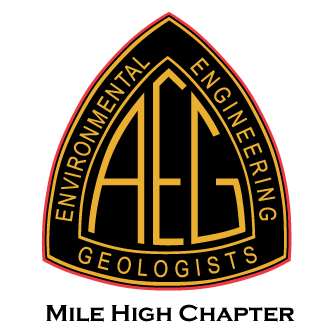November 18, 2025 Chapter Meeting
Speaker: Jamey Turner, BGC Engineering
Topic: Impacts of Absaroka volcanics, Laramide tectonics, glaciation, landslides, and rain-on-snow 2022 flooding severely damaging Yellowstone National Park’s North Entrance Road and plans for resilient rebuilding with the Mammoth to Gardiner Permanent Repairs Project
Abstract: We present geological results obtained in response to the severe damage to the North Entrance Road caused by the interactions between Yellowstone hotspot pyroclastic volcanics, Laramide uplift, Pinedale glaciation, Holocene landslides, and the June 2022 rain-on-snow flooding event that impacted infrastructure and washed-out significant portions of the road. Data used for this study include InSAR, several LiDAR vintages and LCD (change detection), terrain analysis, boreholes and downhole instrumentation, radiocarbon age dating, and geologic-geomorphic mapping. There are fourteen Holocene landslide complexes on the north and east slopes of Sepulcher Mountain south of Gardiner, MT in Yellowstone National Park. Landslide complexes initiated post-Pinedale glaciation ~12-13 Ka. Pinedale glacial ice was up to 3,500 ft thick in the Gardner River Basin and these glacial processes shaped the modern Gardner Valley. Early Holocene deglaciation left behind an oversteepened, debutressed and wet glacial valley. Gravity drove initiation of deep-seated landslides from the gravitational topographic head of Sepulcher Mountain >4,000 ft above the post-glacial Gardner River. Sepulcher Mountain is the remnant of formerly far more extensive cover of ~45 Ma Eocene Absaroka volcanics and related rocks here covering bentonitic Cretaceous strata previously uplifted in the Laramide orogeny; the volcanics infilled a complex antecedent topography. Hydrophilic bentonite is ubiquitous in the basal landslide slip planes. The landslide deposits are a colluvial mixture of Cretaceous strata and Absaroka Volcanics. Published studies suggest that prehistoric earthquakes were common in the vicinity and experienced strong ground shaking events that perhaps triggered landslides, e.g., Yellowstone hotspot-related seismicity, basin and range extension, isostatic rebound, site ~45 km north of the Hebgen Lake 1959 7.2 Mw earthquake. However, there is no known historic seismically triggered mass wasting in the Gardiner River Basin. We obtained ~16 detrital charcoal samples from landslides with multiple nested slide bodies and basal planes for age dating. This work is a collaboration with Yellowstone National Park, Western Federal Lands Highways Division, Jacobs Engineering, and BGC.
Social hour begins at 5:30, announcements and introductions at about 6:45, talk will begin at about 7 pm.
We will be in the private Terminus Room at New Terrain Brewing. Dinner and non-alcoholic beverages provided.
